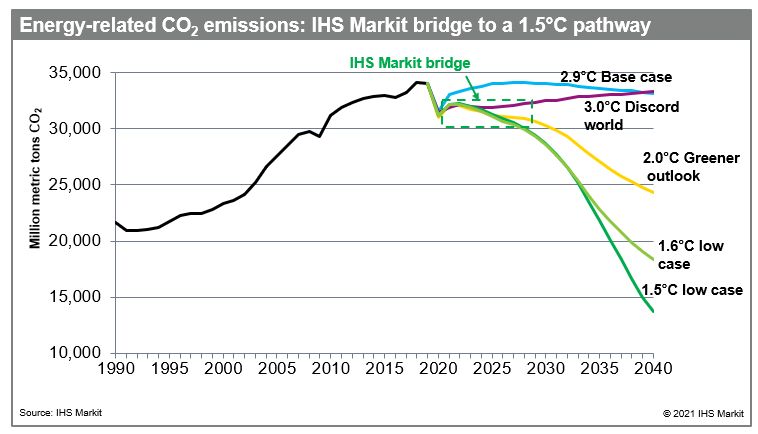Susan Farrell, Vice President at IHS Markit, has posted a new graph with Energy-related CO2 emissions for a variety of scenarios exploring bridging paths to net-zero emissions while engaging in a study exploring strategies, risks and opportunities surrounding the race to a net-zero carbon future.
You can read more on IHS New Supply Chains for the ‘Net-Zero Carbon’ Future: Strategies, risks and opportunities here . This major new study provides the objective, fact-based, comprehensive and independent analysis that is needed on the choices, strategies, investment risks and opportunities ahead in the race to build strong, robust, diversified, and at-scale supply chains required for a net-zero carbon future.
“Throughout 2020, countries and companies continued to announce targets to achieve net-zero emissions. On January 26, 2021, Blackrock CEO Larry Fink’s annual letter to CEOs stated that the largest asset manager in the world would now ask firms to disclose how business models would fare in a net-zero 2050 economy.
Although momentum for climate-related accountability, measurement, and strategic portfolio assessment is accelerating rapidly, against what timelines should plans be tested? Hydrocarbons make up 80% of primary energy demand; although the use of renewables is rising dramatically, the massive existing energy infrastructure does not turn over quickly.
Contrary to some 1.5 °C emissions cases that imagine a straight downward pathway from today, the IHS Markit energy scenarios provide a realistic bridge to a Paris-compliant future, with particular importance for investments and divestments planning over the next decade. #climatechange #energytransition #energy #sustainability #esg #oilandgas @ihsmarkitenergy”
